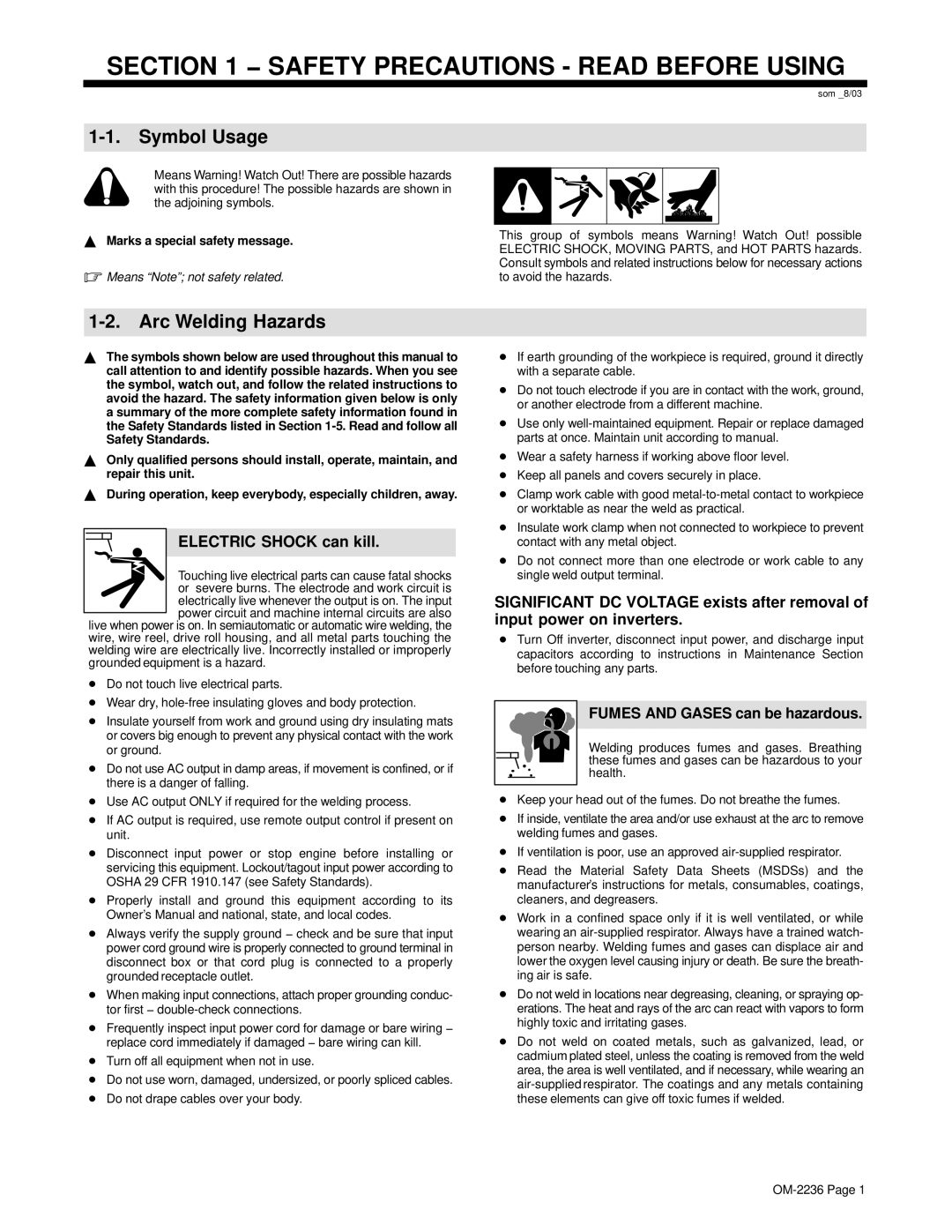SRH-503 specifications
The Miller Electric SRH-503 is a cutting-edge multiprocess welding machine designed to meet the diverse needs of professional welders. This versatile machine combines various welding processes, including MIG, TIG, and stick welding, making it a perfect choice for fabricators, artists, and maintenance professionals. With its robust build quality and user-friendly design, the SRH-503 provides excellent performance for both light and heavy-duty applications.One of the standout features of the SRH-503 is its advanced inverter technology, which allows for efficient and stable arc performance. This technology not only improves energy efficiency but also enhances the machine's ability to handle a wide range of materials, from thin sheet metals to thicker plates. The inverter system ensures a consistent welding output, which is essential for achieving high-quality welds in various positions.
Another significant characteristic of the Miller Electric SRH-503 is its dual voltage capability. Operating on either 230V or 460V, the SRH-503 provides flexibility for working in diverse environments and power sources. This feature is particularly beneficial for welders who need to switch between different job sites or who want the convenience of using the machine in various locations.
The SRH-503 is equipped with a digital display that provides real-time feedback on settings and performance. This makes it easier for welders to adjust parameters for optimal results. The machine also includes advanced controls that allow for precise adjustments of welding voltage and amperage, ensuring that users can fine-tune their settings based on the specific needs of their project.
Built with durability in mind, the Miller Electric SRH-503 features a sturdy enclosure that can withstand the rigors of job site conditions. The compact design increases portability, making it easy to transport between locations. Additionally, the machine's intuitive interface allows for quick setup and adjustment, which saves valuable time in fast-paced working environments.
In summary, the Miller Electric SRH-503 is a state-of-the-art welding machine that brings together versatility, advanced technology, and user-friendly features. With its inverter system, dual voltage capability, intuitive controls, and rugged design, this machine is well-suited for professionals seeking reliable and efficient welding solutions. Whether for industrial, fabrication, or repair applications, the SRH-503 delivers exceptional performance and quality.

